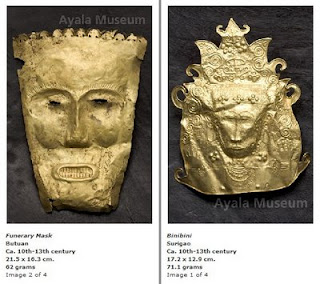I love going to museums. It is like History 101 for any country in the world and that is why I went to a lot during our latest visit to the Philippines. We visited University of the Philippines' Vargas Museum, Makati's Ayala Museum and Manila's Pambansang Museo and the Museum of the Filipino People.
The National Museum was shameful and embarrassing. Although it houses some of the most expensive painting in the country, these art pieces are so dirty that one could only guess the real colour sand details of the art pieces. Many of the animal skeletons are either missing or broken and all are hidden in the dark. Most of the museum is actually closed and blocked from public viewing as these parts are being rebuilt. Nevertheless, it is depressing that the place that should contain the things that define us as a country is in shambles.
The Museum of the Filipino People stands right beside the National Museum and it charges everyone a 100 peso fee upon entering. I am not really sure why but half of their collection focus on shipwrecks and relics found in them. They definitely do not reflect the Filipino people. Half of their collection is devoted to indigenous tools but many of the explanations are missing and/or kept in the dark where nobody can read them.
The Vargas Museum is a must for students learning how to paint as it is also a home to some priceless paintings. It also has some very recent paintings that have become very popular (i.e. Joy Mallari's "Doll Eyes") and works of aspiring artists. Unfortunately, the priceless paintings can only be viewed at certain days and at certain hours of those days. And we missed those few hours.
The Ayala Museum is a private museum owned by the Ayala Corporation (who else?). Its presentation of the Philippine democratic history history in diorama is even better than what I have seen in Australia. But the most memorable part of their collection are the gold pieces. I did not know that we produced so much jewelry and goldenware before the Spaniards came. Many of these pieces even date as far as the 10th century. That collection really made me proud that we had such a rich life before the white people came. The only downside to this museum is there is a different fee for foreigners--a 100% difference.
So I thought that I was going to introduce Steven to Philippine history and culture but instead, I was able to show him a representation of the Philippines' present state. As the government-owned museums are in shambles and in the dark and so is our own government. As we see glimpses of our beauty once in a while, we also see glimpses of our ugliness half of the time. Only the big private corporations give us light but then they also reflect the great disparity between the rich and the poor.





No comments:
Post a Comment